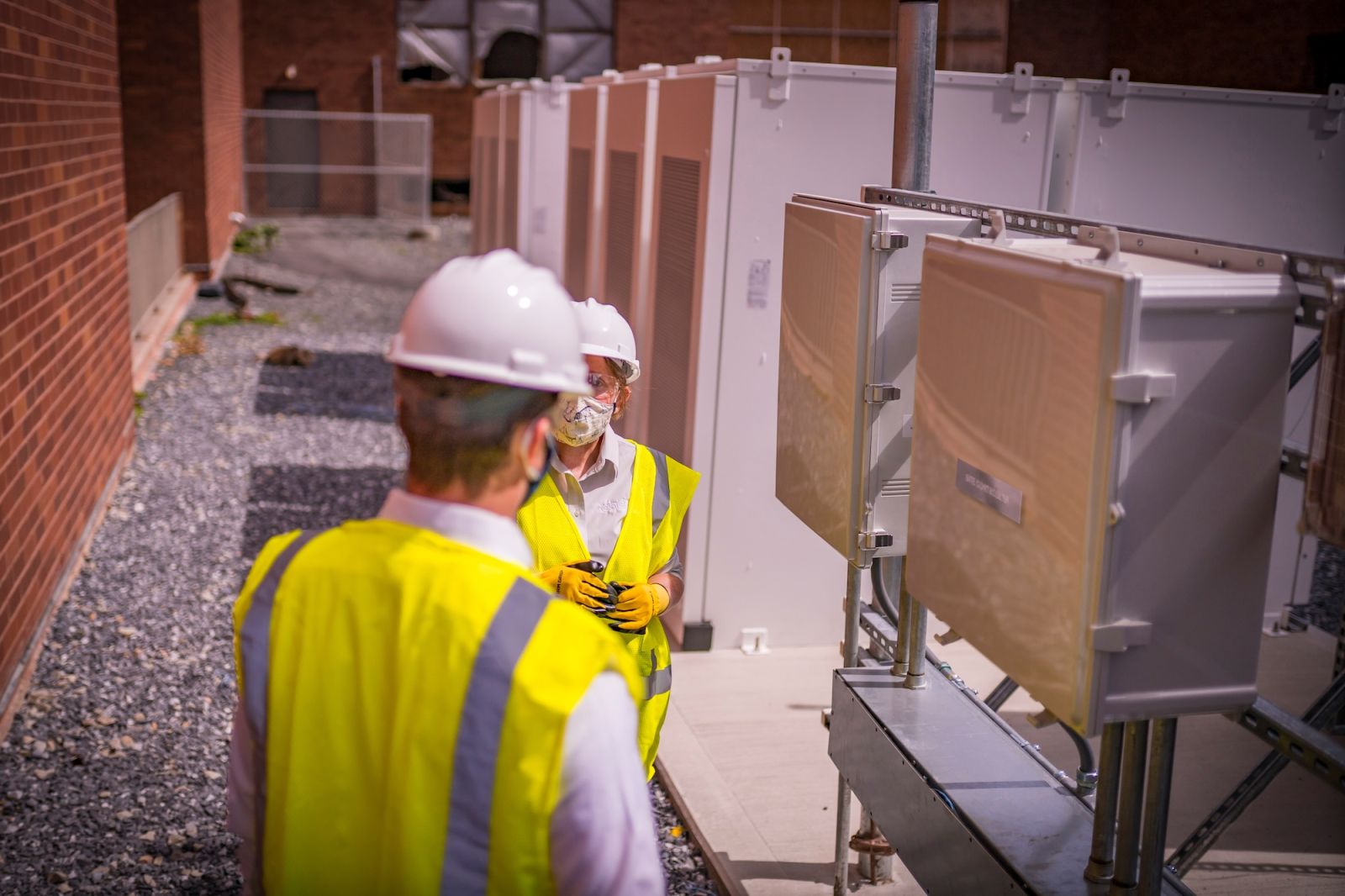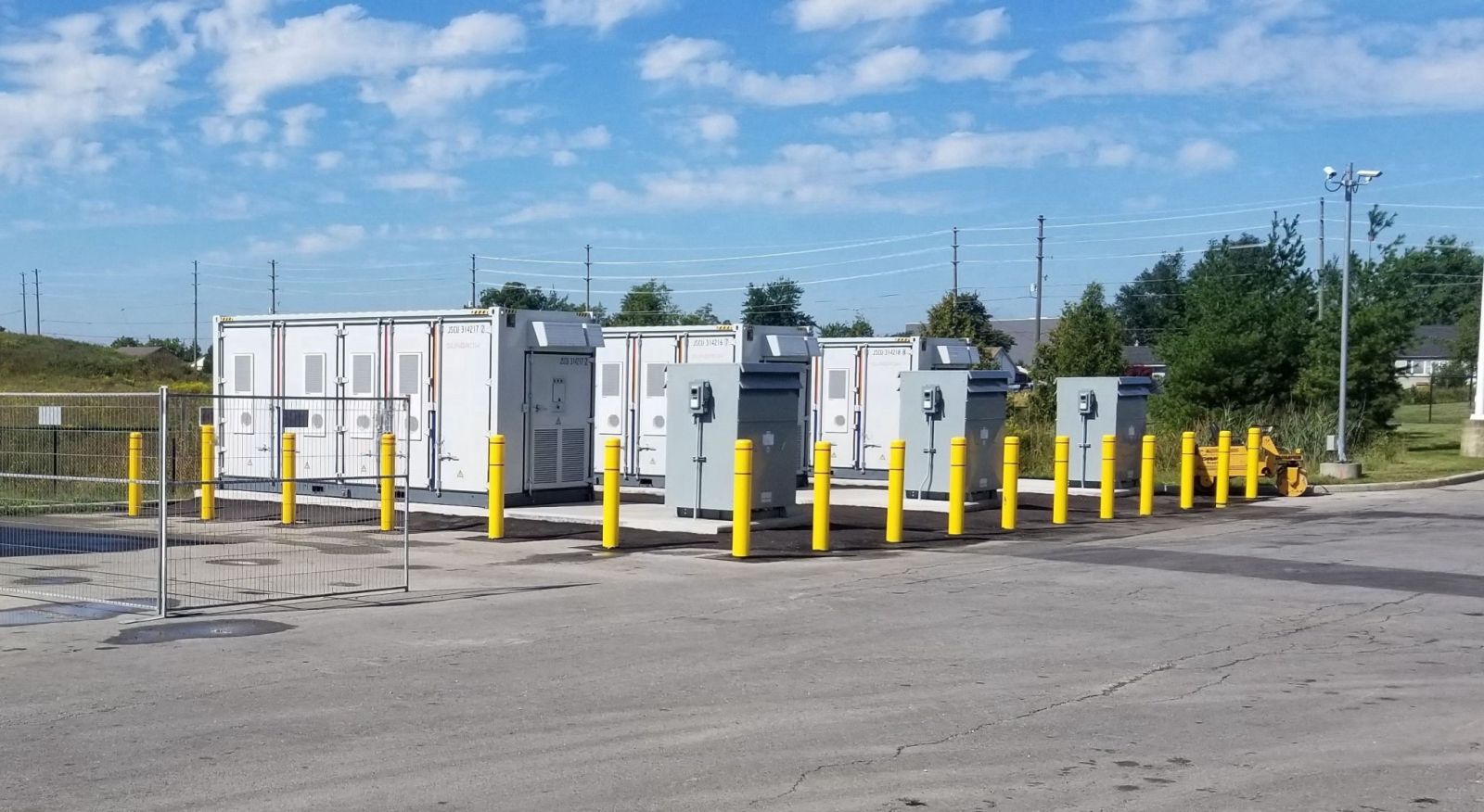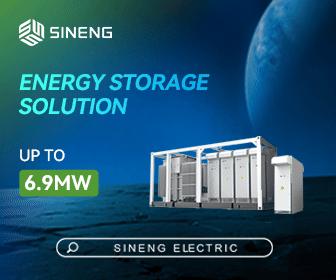On-site Energy Storage to Accelerate Speed to Power in Constrained Markets
Electricity demand in the U.S. has surged dramatically, with ICF projecting U.S. electricity demand to spike by an average of 9 percent by 2028, after two decades of stagnation. This sharp rise is largely driven by the rapid expansion of data centers — expected to grow to 9 percent of U.S. electricity generation annually by 2030, up from 4 percent today, according to EPRI — and the industrial onshoring and electrification of heating and transportation. These demands have pushed the U.S. grid to its limits, creating significant challenges for large energy users seeking timely interconnection.
For industries like data centers, delays in interconnection can translate into billions of dollars in lost revenue. For context, according to Berkeley Lab, the interconnection queue backlog grew by 30 percent to nearly 2,600 gigawatts (GW) in 2023.
While natural gas generators are often considered a default solution, an often-overlooked alternative is emerging: on-site energy storage.

The untapped potential of on-site energy storage
Historically, on-site (or co-located with customer load) energy storage systems like battery energy storage systems have been deployed for cost-saving opportunities, such as reducing peak demand charges or maximizing self-consumption of on-site solar. U.S. energy storage installations increased by 70 percent in 2023, totaling 6.4 GW of new capacity added to the grid, yet few have viewed these systems as a pathway to accelerate power access.
However, on-site energy storage can serve multiple objectives, including acting as a critical bridge to alleviate grid constraints and reduce interconnection delays. These systems provide real-time energy flexibility, which is especially valuable in grid-constrained regions where utilities are cautious about granting new interconnections. In this context, flexibility can act as an alternative to generation, delivering the same reliable energy services needed to power access without requiring the addition of new generation assets. By offering localized support during grid stress events, on-site energy storage helps utilities enhance reliability, often expediting interconnection timelines, and providing a vital tool to expand access to power.
Path-to-power explained
Path-to-power is a concept designed to deliver energy flexibility in constrained grid environments, accelerating interconnection for large energy users like data centers and manufacturers.
Unlike "bridge power," which supplies primary energy through microgrids while awaiting grid interconnection, path-to-power focuses on deploying distributed energy resources (DERs) such as BESS. These systems provide critical grid support, easing congestion and expediting grid readiness for new loads.
The mechanics of path-to-power are straightforward but effective. By deploying on-site energy storage and other flexible assets, large energy users can help balance supply and demand in localized areas, easing the congestion that often causes grid bottlenecks. These systems can also reduce strain on transmission and distribution infrastructure, acting as dynamic stopgaps while utilities complete longer-term upgrades. Importantly, this approach can shorten interconnection timelines by as much as three to four years, enabling businesses to meet their energy needs far sooner than traditional processes allow.
The distinction between path-to-power and bridge power lies in their purposes, long-term implications, and benefits for all stakeholders. Path-to-power is inherently collaborative, positioning DERs as long-term assets that work alongside utilities in solving grid challenges. These systems provide valuable grid services, such as demand response or peak shaving, directly addressing the utility’s operational needs while offering data centers faster access to power. Unlike bridge power, which serves as a short-term, independent solution to keep operations running until a grid connection is finalized, path-to-power creates enduring value by leveraging flexible capacity that remains useful long after non-constrained utility power is available. This flexibility can serve critical grid functions for 15+ years, ensuring continued benefits for both the utility and data centers.

The economic case for path-to-power
Path-to-power fosters a true win-win dynamic, especially from an economic perspective. For data centers, it accelerates power access, reducing the time and costs associated with lengthy interconnection delays while offering operational resilience. For utilities, it generates additional revenue from seeking power to connected DERs, and provides influence over a flexible asset to help address challenges like peak demand and system reliability. By allowing utilities to have direct input into when systems are dispatched, path-to-power enables utilities to align DER operations with critical system hours, enhancing grid stability during stress events. Path-to-power stands out as a partnership-driven approach that delivers sustainable, long-term benefits for all parties involved.
Consider the impact: For a 100 MW data center, a three-year interconnection delay could result in ~$1 billion in unrealized revenue for both data center and utility revenue based on typical industry output. By deploying 80-100 MW of energy storage and committing grid services, interconnection timelines can be cut significantly, saving millions while ensuring operational readiness.
A resilient energy future
In regions where grid constraints threaten growth, path-to-power offers a proactive and collaborative solution. By integrating on-site energy storage into their strategies, businesses can secure faster access to power, utilities can better manage reliability while continuing to accommodate the load growth demanded, and the grid as a whole can become more adaptable to the demands of a rapidly electrifying economy.
On-site energy storage isn't just a cost-saving tool — it's a strategic asset for accelerating deployment, enhancing grid resilience, and supporting a sustainable energy transition. Recent recognition from the Department of Energy (DOE) underscores this potential, with large scale projects around the country earmarked for funding under the “Data Center Flexibility as a Grid Enhancing Technology” initiative. This support highlights the vital role that data centers, paired with advanced energy storage systems, can play in providing grid flexibility during critical periods. For businesses and utilities alike, path-to-power represents a powerful lever to unlock growth while building the grid of the future.
William Homza is Senior Solutions Engineer for Distributed Energy Solutions at Calibrant Energy, which helps organizations transition to clean energy by designing and delivering energy as a service (EaaS) solutions.
Calibrant Energy | calibrantenergy.com
Author: William Homza
Volume: 2025 January/February









